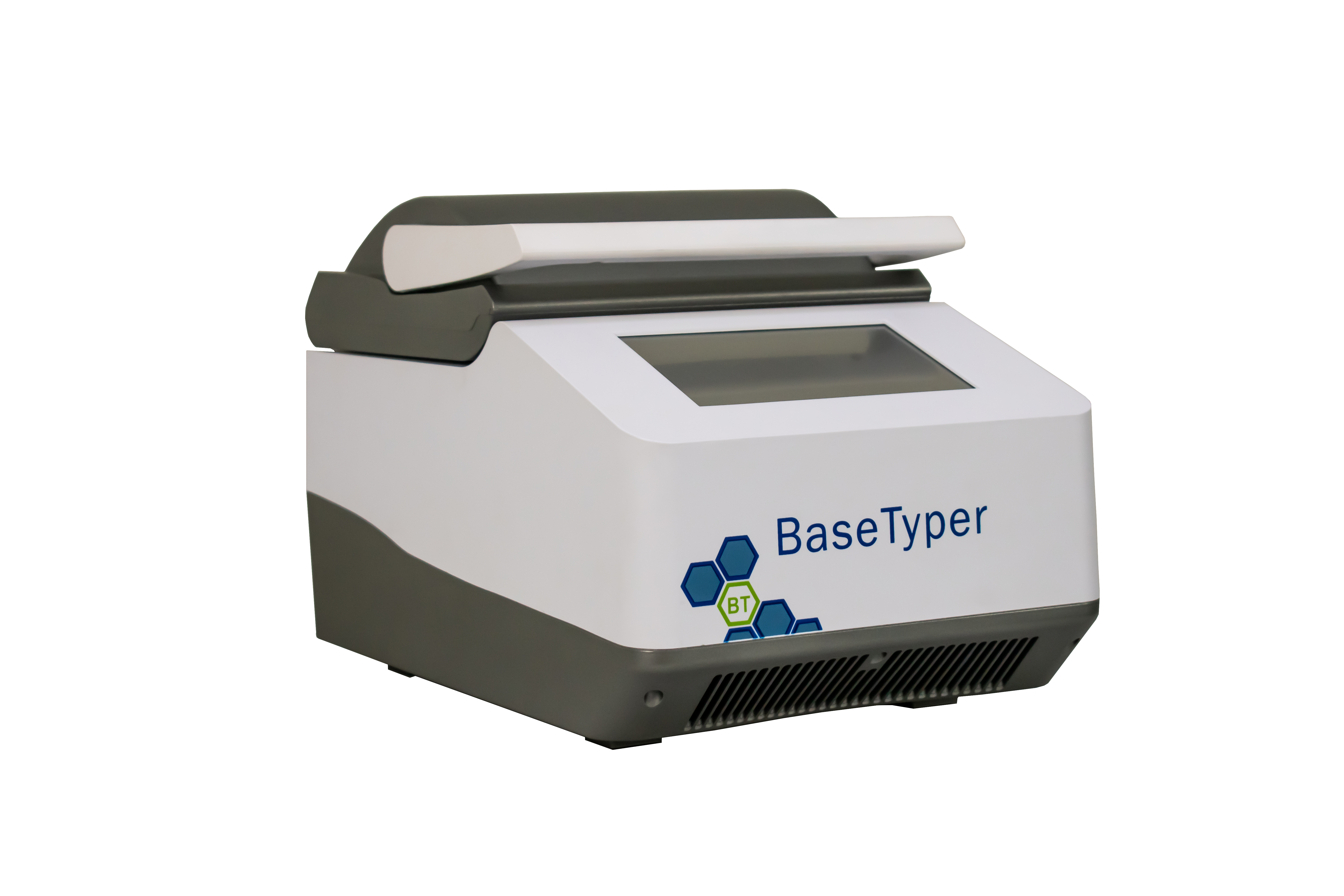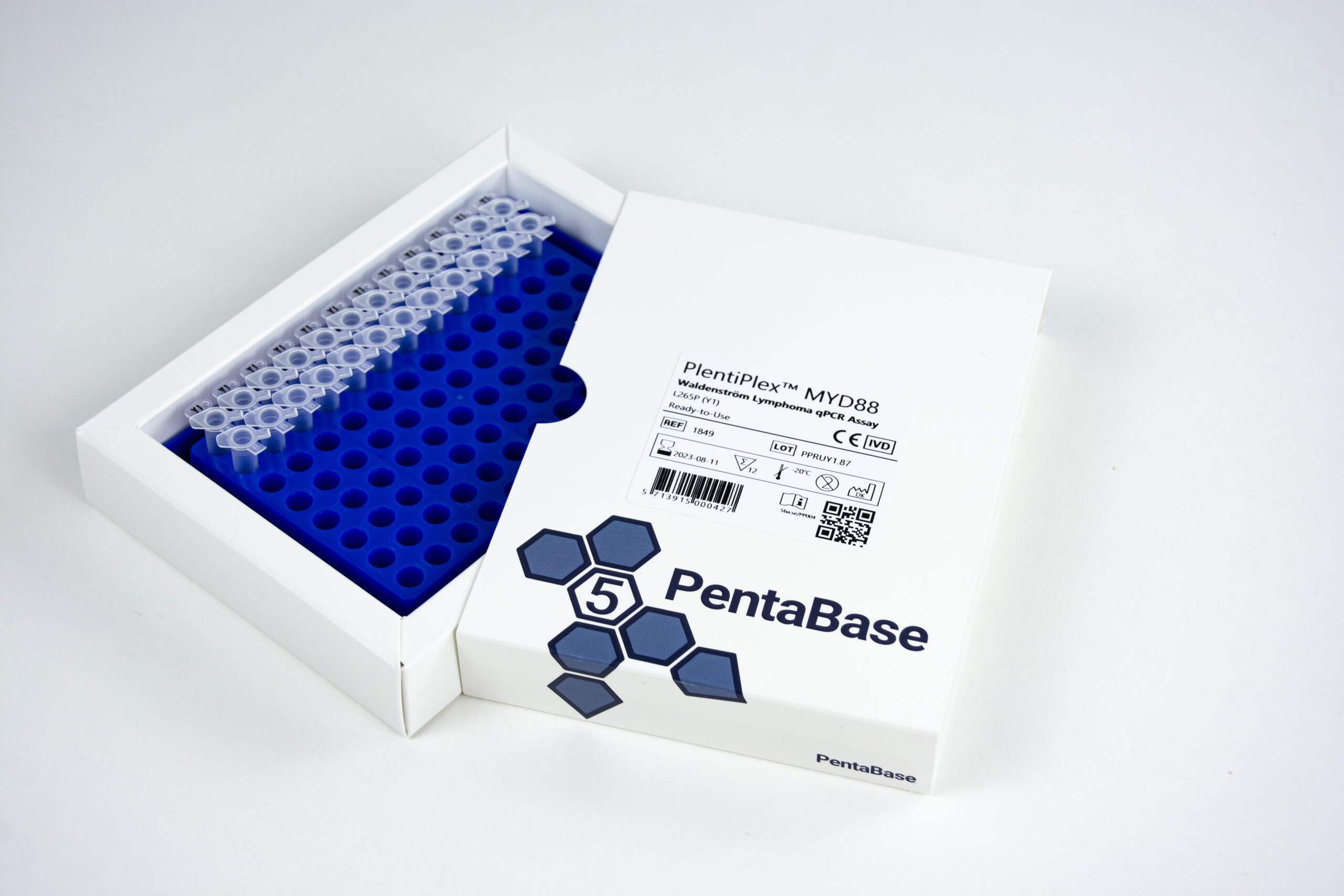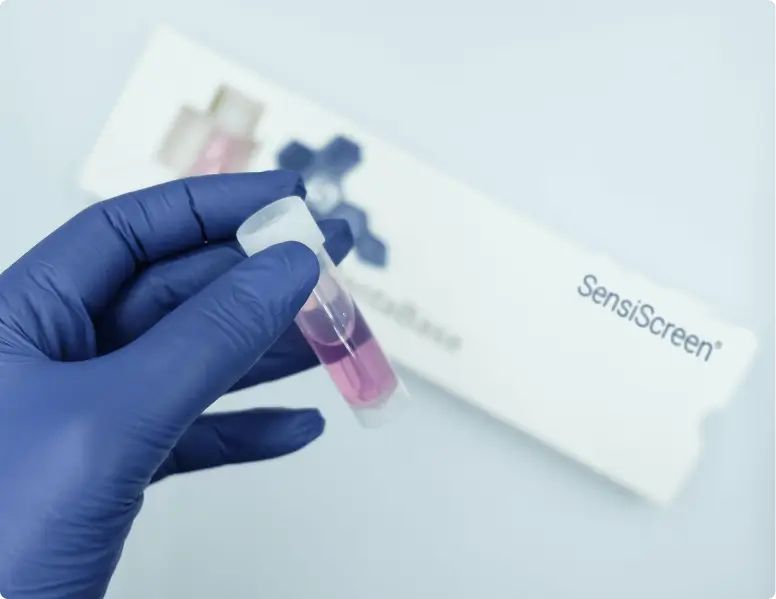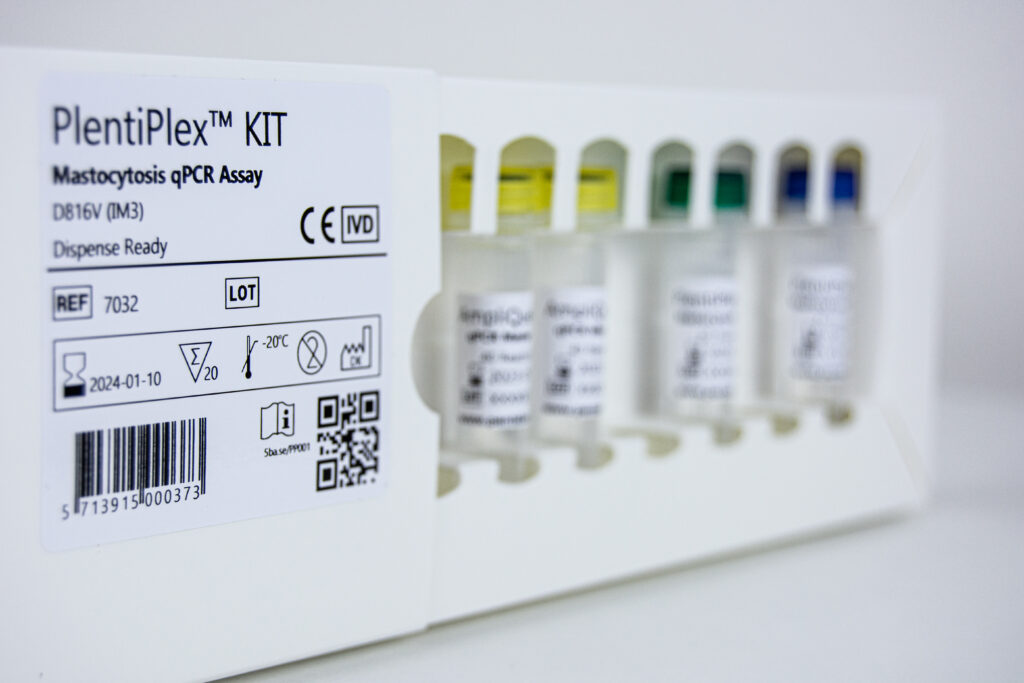
BaseTyper™ 48.4
Quiet HRM Real-Time PCR System, CE IVDR
The BaseTyper™ 48.4 Quiet HRM Real-Time PCR System is a 4-channel 48-well instrument with an LED light source and 48 individual fiber optic cables. The BaseTyper™ 48.4 provides high a level of temperature accuracy which makes it particularly useful for high resolution melt (HRM) applications such as when evaluating microsatellite instability using the MicroSight® MSI 1-Step HRM Analysis assay. Its compact dimensions of 40 × 26 × 26 cm and weight of 11 kg make it ideal for laboratories where space and flexibility matter.
The BaseTyper™ series consists of open-platform real-time PCR instruments supplied by PentaBase for use with PentaBase assays and oligonucleotides or in other applications.
- CE IVDR
- 4-channels and 48 wells
- Small and compact instrument
- Fast and accurate real-time PCR
- High resolution melting (HRM) and advanced HRM software
Product Details
Reference Number:
754
Product name:
BaseTyper™ 48.4 Quiet HRM Real-Time PCR System
Intended Use
The BaseTyper™ 48.4 Quiet HRM Real-Time PCR System is intended for performing silent, rapid, and accurate Polymerase Chain Reactions (PCR), Reverse Transcriptase PCR (RT-PCR), quantitative PCR (qPCR), and fluorescence-based melt and High-Resolution Melt (HRM) analyses. The BaseTyper™ 48.4 Quiet HRM Real-Time PCR System obtains real-time measurements of signals from up to 48 samples in each run. The sample material genetic material (RNA and DNA) from the human body. The BaseTyper™ 48.4 Quiet HRM Real-Time PCR System can be used in medical institution laboratories and clinical laboratories for infectious pathogen (such as viruses, bacteria, mycoplasma, etc.) detection, or multiple tumor marker tests of neoplastic diseases, etc.
For scientific research, it could be used for the fluorescence quantitative or qualitative analysis of genetic material (DNA, RNA, and derivatives of both) in fields of immunology, molecular biology, forensic science, genetics, archeology, zoology, phytology, etc. Each well can be analysed using fluorescence in up to four different fluorescent channels. The fluorescent signals can for example originate from DNA-binding fluorescent dyes or labeled probes. Signals can be converted to presence, comparative quantities, and/or physical-chemical property readouts. The instrument is intended for use by healthcare professionals or qualified laboratory personnel instructed and trained in the techniques of PCR.
Product Specifications
Capacity:
1 to 48 samples
Reaction Volume:
1 – 100 μL
Light source and Detection:
Long-life and maintance-free LED light source Photodiodes – Detection is from the side of the tube and in each individual well
Consumables:
0.2mL, non-skirt tubes, clear or frosted. Single tube or 8-well strip
Excitation / Emission (nm):
1. 465/510
2. 527/563
3. 580/616
4. 632/664
Channel / Dye:
1. FAM, SYBR Green I, etc.
2. VIC, HEX, TET, JOE, etc.
3. ROX, Texas Red, etc.
4. Cy5, etc
Multiplex level:
Up to 4 channels
Experiment data storage:
1000 completed run files
Heating Temperature:
Heating 8°C/s heating
Cooling Rate 8°C/s cooling
Uniformity ± 0.1°C
Accuracy ≤ 0.1°C
Precision ≤ 0.1°C
Connection Options:
Stand alone operation is possible through a 7.0 inch touch screen. Operation through the use of an external PC is possible when connecting via ethernet cable. A PC can connect up to 10 instruments. Files transfer via USB stick or, when the instrument connects to a computer, via an Ethernet cable.
Operating Power and Noise:
100V-240V
50-60 Hz
65 db(A)
Instrument Dimension and Weight:
40 cm (L) x 26 cm (W) x 26 cm (H)
11 kg (net)
Instructions For Use
For the latest version of the Instructions For Use (IFU) – Click here –

Assisting the Stratification of Lymphomas
The PlentiPlex™ MYD88 L265P assay is intended for in vitro diagnosis of the leucine to proline mutation in codon 265 of the Myeloid differentiation primary response 88 protein (MYD88 L265P) in genomic DNA (gDNA) samples. The obtained results of the PlentiPlex™ MYD88 L265P assay are intended for assisting in the discrimination between patients with Lymphoplasmacytic lymphoma/Waldenstrom macroglobulinemia (LPL/WM) and other non-Hodgkin lymphomas.

